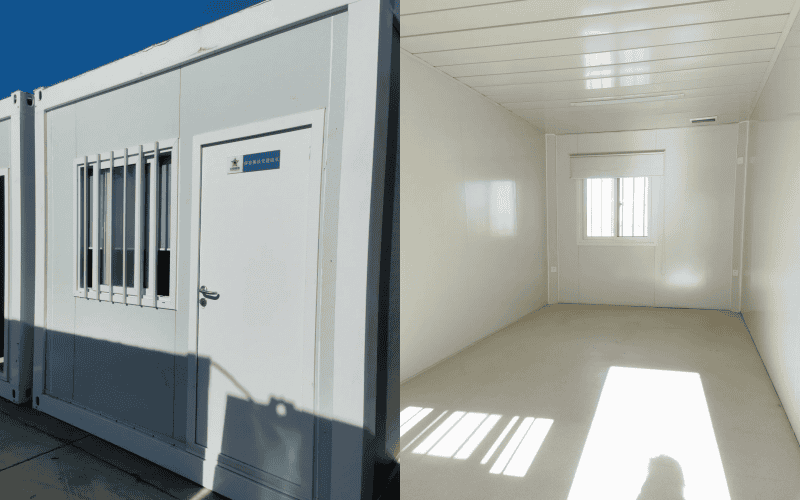A Practical Guide in Customizing Your Office Container

When it comes to creating a functional and efficient workspace, an office container offers flexibility, portability, and affordability. However, its true potential comes when you customize it to match your work requirements. Whether you’re setting up a remote project base, a creative studio, or an admin hub, the right modifications can make it just as comfortable and productive as a permanent office.
Define Your Space Requirements First
Before making any changes, identify exactly what you need the container to do.
- Determine the number of people who will use it.
- Identify the type of work being done—administrative, technical, or creative.
- Decide on essential zones: workstations, meeting areas, storage, and rest spaces.
Clarity at this stage prevents unnecessary modifications and wasted budget.
Plan for Efficient Layout and Flow
Space in a container is limited, so layout planning is key. Use a simple floor plan sketch to visualize where each function fits best.
- Position desks near windows for natural light.
- Keep pathways clear to avoid cramped movement.
- Consider modular furniture that can be rearranged easily.
A practical flow helps the workspace feel bigger and more comfortable.
Upgrade Insulation and Ventilation
Containers are metal structures, which means they can heat up quickly in summer and lose warmth in winter.
- Add wall and ceiling insulation for temperature control.
- Install proper ventilation to reduce humidity and improve air quality.
- Consider an air conditioning unit or heater for year-round comfort.
A controlled climate boosts focus and reduces energy loss.
Choose Functional Interior Finishes
Interior finishes affect both appearance and durability.
- Use light-colored wall panels to reflect light and make the room appear larger.
- Select flooring that’s easy to clean and resistant to wear, such as vinyl or laminate.
- Opt for ceiling finishes that hide wiring while allowing easy maintenance access.
These choices create a professional yet low-maintenance workspace.
Maximize Storage Without Losing Floor Space
Small spaces can become cluttered fast. Smart storage solutions help keep order.
- Install vertical shelving to utilize wall height.
- Use under-desk drawers and cabinets.
- Incorporate built-in storage along unused corners.
A well-organized office container maintains productivity by minimizing distractions.
Optimize Lighting for Productivity
Lighting affects both mood and efficiency.
- Combine natural light with LED fixtures for even brightness.
- Add task lighting on desks for focused work.
- Use warm lighting for lounge or break areas to create a relaxed feel.
Balanced lighting reduces eye strain and improves workspace energy.
Integrate Power and Connectivity
Modern offices rely heavily on technology, so plan for enough power points and data connections.
- Install multiple outlets in accessible spots.
- Include USB ports for direct charging.
- Add a secure network setup for stable internet connectivity.
Avoid relying on extension cords to keep the space safe and clutter-free.
Improve Security Features
Containers are portable, but that also makes security important.
- Use reinforced locks for doors and windows.
- Consider security bars or shutters for high-risk locations.
- Install motion-sensor lighting or an alarm system.
Secure features protect equipment, documents, and sensitive data.
Add Personal and Brand Touches
Customizing isn’t just about function—it’s also about identity.
- Use wall colors that match your brand.
- Hang motivational artwork or project boards.
- Add plants to improve air quality and create a welcoming vibe.
These touches make the workspace feel owned and comfortable.
Consider Mobility and Future Changes
If the container will be moved often, design with mobility in mind.
- Use lightweight, modular furniture that can be packed quickly.
- Choose detachable storage units for easy relocation.
- Avoid heavy built-ins that limit flexibility.
A mobile-friendly setup ensures the workspace adapts to new locations without high costs.
Pay Attention to Exterior Modifications
The outside of the container is just as important as the inside.
- Add an awning for shade and rain protection at the entrance.
- Paint the exterior with weather-resistant coatings.
- Create signage for easy identification and branding.
Exterior improvements increase usability and visibility in any environment.
Manage Noise Levels
Noise can disrupt concentration, especially if your container is near a busy site.
- Use soundproof panels on walls and ceilings.
- Install thicker doors or acoustic seals.
- Place noise-generating equipment in separate compartments.
Reducing noise keeps communication clear and focus intact.
Ensure Compliance with Local Regulations
Before finalizing modifications, check building codes or workspace regulations.
- Verify electrical and structural safety compliance.
- Check if permits are required for certain installations.
- Follow occupational health and safety guidelines.
Compliance avoids fines and ensures employee safety.
Create a Comfortable Break Area
Even in a small space, a dedicated break zone helps maintain work-life balance.
- Include a compact table and chairs.
- Add a mini fridge or coffee machine.
- Use softer lighting for a relaxed feel.
This small detail supports morale and productivity over the long term.
By approaching customization methodically, you can turn a basic shipping container into a productive, comfortable, and fully tailored workspace. Each decision—from layout to lighting—should serve a clear purpose, ensuring every square foot works in your favor.